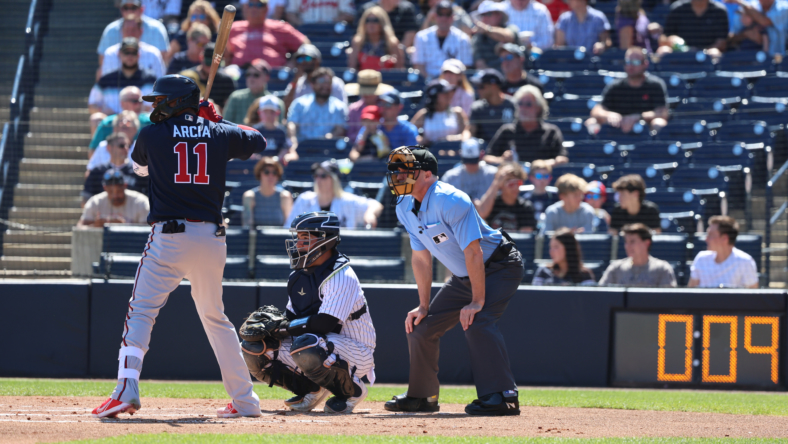
Take me out to the ballgame. And get me home before dinner.
What a concept! What a throwback treat for an afternoon game!
What an absolute Theo-send this new pitch clock is to the sport that is so famous for no clocks.
What’s next — flannels, high stirrups and flap-less helmets?
It’s only been a few days of MLB spring training games, but the brisker pace created by the 15- and 20-second limits on pitchers to start their deliveries — and even tighter limits for batters to be in the box and “alert” — has proven to be as effective as promised.
And even entertaining in ways not-so-much promised. Who will ever forget where they were when Atlanta’s Cal Conley was rung up with the bases loaded for the final out of the game because he had not returned to the box in a hitting position within the time allotted?
That might not seem so entertaining if it happens during the regular season — never mind the postseason.

But the pitch clock is already working so well that early spring games showed pace-of-play results that aligned closely with the roughly 25 minutes shaved off games in the minor leagues where it was employed in recent seasons.
To be clear, the intent never has been about shortening the elapsed time of games, per se. It’s about pace. Time of game is just the byproduct.
For those of us who enjoy watching the pace of games on grainy old classic re-broadcasts from decades ago — or who actually remember watching some of those games live — this is a change long overdue.
Just too bad it took actually installing a clock to prevent or at least limit all the batting-glove fidgeting, time-calling, pitchers’ laps around the mound between pitches and ball rubbing.
Kids today.
Well, kids yesterday, too.
Actually, kids in front offices for the last 20-plus years.
Former Boston Red Sox and Chicago Cubs top executive Theo Epstein — one of the principals behind all of this year’s changes in his subsequent work with MLB’s commissioner’s office — told Chicago radio host David Kaplan last week that he liked having the opportunity to help fix some of what he was a big part of breaking in the game.
More than 20 years ago Epstein was at the front edge of the so-called Moneyball trends that included building lineups with players who could “grind” at-bats, see lots of pitches, draw more walks than most and consequently drive up starters’ pitch counts to get into what used to be the softer middle of opponents’ bullpens.
One thing led to another, led to longer games, led to three true outcomes, led to an already pastoral, slow-paced game finding a way to somehow get much slower.
Epstein pointed out during the run-up to this year’s changes that there’s an average of “well over four minutes” between points of action in the majors in recent seasons. That’s more than twice as long as just a few decades ago.
But he and the other powers that be have taken a big stride in the right direction if early results of this new pitch clock are any indication.
The only issue now is finding ways to use that extra 25 minutes we’re getting back on MLB game days.
Heck, that’s enough time for some ball writers to write an extra story after the game. It’s enough time to make dinner reservations at the Blue Adobe in Mesa, Arizona — and to get there from Tempe.
It’s enough time to gaze at all those “pizza boxes” on the diamond where the smaller bases used to be for 100 years, phone in a takeout order to Nino’s in Fort Myers, Florida, for a 16-inch chicken tomato pizza in the eighth inning and to get there from Hammond Stadium to pick it up before the dinner rush.
Enough time to daydream about the return of the .300 hitter now that extreme infield shifts are banned — or more Little League home runs on flares if somebody’s brave enough to try an outfield shift that vacates left field.
It’s enough time to play catch after the game with your kid, or your dad, before it gets dark.
Enough to make you remember why you started liking the game in the first place.
Gordon Wittenmyer covers Major League Baseball for Sportsnaut. You can follow him on Twitter at @GDubCub.
